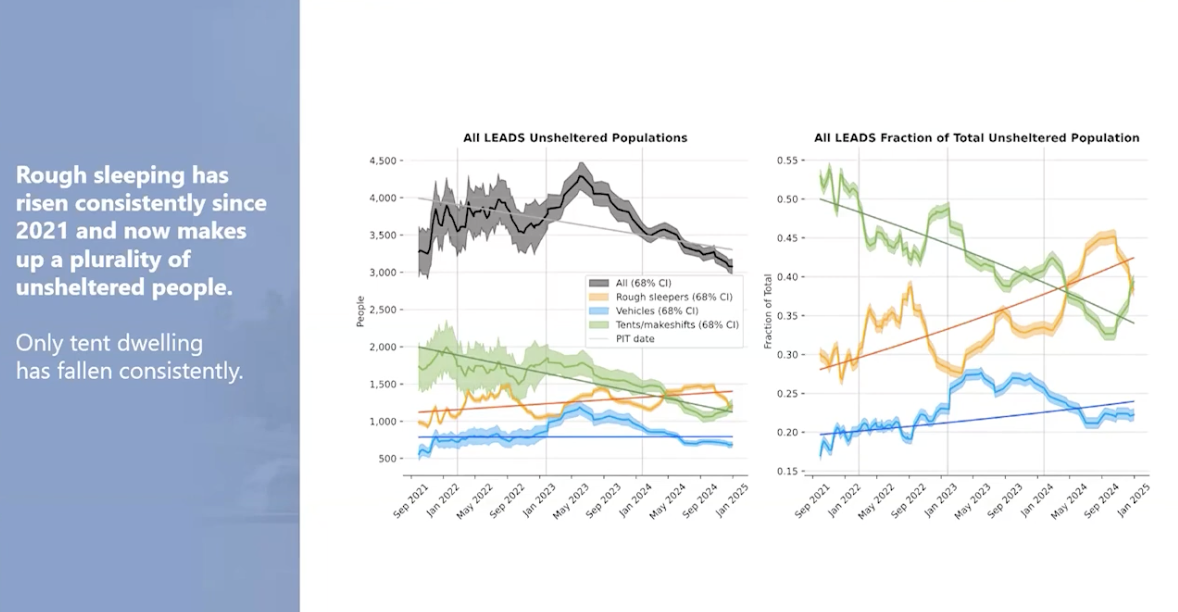When the RAND Corporation released its 2024 LA LEADS Annual Report in June, it found that the drop in Venice’s unsheltered population was driven by a reduction in vehicle dwellers, not by housing placements. At an August 4 presentation of the findings, RAND researchers went further, making clear that the decline is more about enforcement and invisibility than actual solutions.
“This is a reduction in visibility, not necessarily a reduction in homelessness,” the lead author told attendees. “If enforcement displaces people to other neighborhoods or outside the city, the problem does not go away, it just moves.”
RAND’s updated analysis shows that Venice’s unsheltered count fell by about 25 percent over the past year, outpacing the citywide trend. The tent count has been near zero since the January 2023 Inside Safe operation, and researchers emphasized that there were no large-scale housing actions in the Venice survey zone in 2024. The biggest change was the sharp drop in vehicle dwellers, a shift RAND said likely reflects the cumulative effect of Los Angeles’ expanding oversized vehicle bans and targeted enforcement.
“We are hearing stories, and they are not isolated, of vehicle dwellers being told by authorities to move along, sometimes repeatedly,” a RAND team member said. “If they leave Venice, they are not necessarily going into housing.”
The displacement of vehicle residents has not meant fewer people on the street. The number of people sleeping entirely without shelter has risen. RAND warned this creates “clinical, tactical, and strategic challenges” for outreach, since people without shelter are harder to locate, more vulnerable to violence, and at higher risk of death.
Venice’s unsheltered population looks different from other study zones. About one in five is employed and a quarter have a driver’s license, far higher than in Skid Row or Hollywood. Many also have a working cell phone, which can help with staying connected to services. These markers, however, have not translated into more housing offers. RAND reported that while 91 percent of unsheltered respondents want housing, only 13 percent had been offered permanent supportive housing.
The RAND presentation echoed what local advocates have been warning for years: policies focused on removing people from certain neighborhoods, whether through encampment sweeps or vehicle bans, shift the crisis without solving it. The researchers stressed that without a meaningful increase in housing options, enforcement will continue to produce visible progress without addressing the underlying causes.
“Housing ends homelessness. Enforcement just ends homelessness here,” one RAND researcher said.
Councilmember Traci Park’s district has been a testing ground for aggressive oversized vehicle restrictions. Since March 2023, she has pushed through twelve motions banning overnight parking for RVs and other large vehicles on 79 street segments in CD11. None of these actions were paired with RV-safe parking or housing placements. The result, as the RAND data suggest, is not fewer unhoused people overall, just fewer visible in Venice.
RAND’s August 4 presentation leaves no ambiguity. The story city officials have been telling about progress in Venice is incomplete at best. Until the city matches the scale of its enforcement with the scale of housing needed, Los Angeles will keep chasing a moving target and the human cost will keep climbing.

